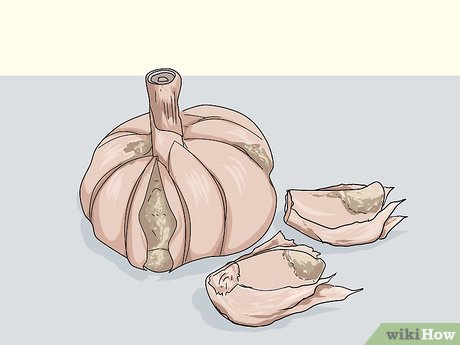How to tell if garlic is bad and avoid food waste
– Fresh garlic should be firm and have a strong, but not overwhelming smell.
– Signs of bad garlic include mold (white, dark brown, or black), soft spots that are brown or black, sprouting, strong acrid or ammonia-like smell, and yellowing color.
– A fresh bulb of garlic, when stored properly, can last for 3 to 6 months.
– Garlic should be stored at room temperature in a dry, dark place with good ventilation.
– Garlic should not be stored in the refrigerator unless it’s peeled or chopped.
– Garlic with a bad smell, specifically an acrid or sour smell, should not be eaten as it may taste bad and make someone sick.
– Individual peeled garlic cloves can last for up to one week in the refrigerator.
– Minced garlic will last for a day unless stored in olive oil or frozen.
– Garlic can be frozen, and it will keep for up to a year when stored in a freezer-safe container.
– Whole, unpeeled bulbs, individual peeled cloves, and minced/chopped garlic can all be frozen.
– Properly stored fresh and whole garlic can last up to five months in the pantry and 12 months in the freezer.
– Fresh and raw garlic does not have an expiration date and can last up to three to five months in the pantry.
– Peeled and chopped garlic can last for about a week in the refrigerator and 10 to 12 months in the freezer.
– Processed garlic usually has an expiration date on the label, with a prepared jar of chopped or minced garlic lasting up to three months in the fridge.
– Spoiled garlic has brown spots on the cloves and turns from white to a different color.
– Garlic can be considered bad if it has a yellow or brown color, green roots forming in the clove, or loses its distinct smell and has a sour scent.
– Spoiled garlic can cause botulism, a rare but serious and potentially fatal illness.
– Botulism symptoms from bad garlic include nausea, vomiting, dizziness, double vision, difficulty swallowing and breathing.
– Proper storage of garlic includes keeping it in a dry and dark place, at room temperature, and in containers that allow air circulation.
– Freezing garlic can extend its shelf life, but may alter the texture and flavor.
– Peeled garlic can be frozen by spreading cloves on a baking sheet for 20 minutes, then transferring them to an airtight container or freezer bag.
– Minced and chopped garlic can be stored in an airtight container or jar, covered with olive oil, in the refrigerator.
– Chopped and minced garlic can also be kept frozen, either in an airtight container or wrapped tightly with freezer plastic wrap.
